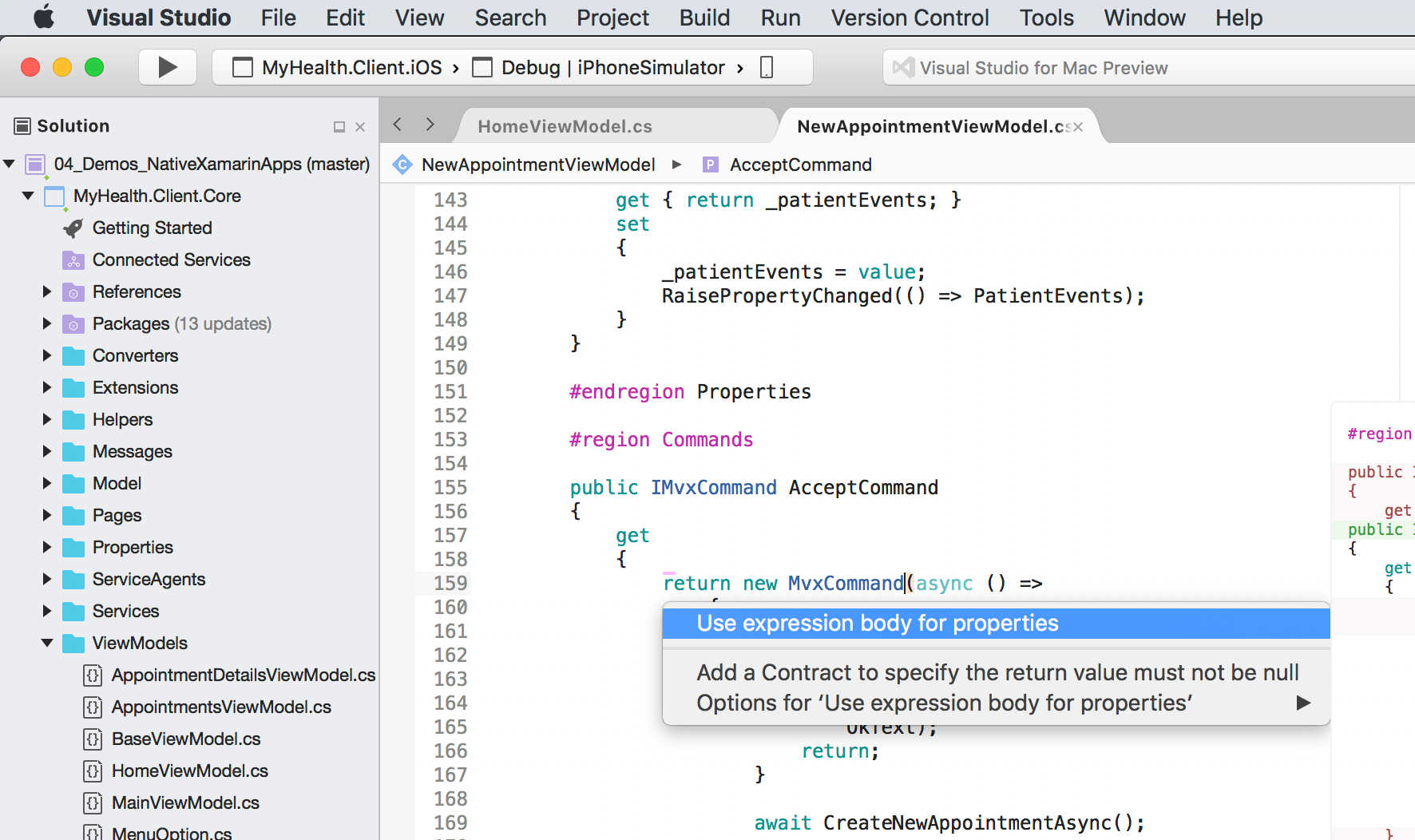Microsoft held the keynote for its Connect() developer conference today, where it announced the next version of its integrated development environment (IDE), Visual Studio 2017. The company is also offering a release candidate, which you can grab from VisualStudio.com.
Yes, the preferred language for my computer is set to European Portuguese and on Visual Studio for Mac the User Interface Language is set to 'Default'. Yes, I've added Japanese to the Input Sources and since then some options on Visual Studio for Mac appear in Japanese rather than the 'Default' language.
The IDE has been in preview under the name Visual Studio '15' since earlier this year, and it offers a new installer. In fact, for the first time in years, the smallest installation comes in at under 750MB. Of course, packing it out with all of the features that it offers will make it much larger; it can be over 60GB.
The company's latest IDE has a heavy focus on mobile cross-platform development, coming with an iOS Simulator, a feature that used to be exclusive to developing on a Mac.

VS 2017 also includes improvements to IntelliSense, which is among the most popular and helpful features of Visual Studio. New enhancements include smart preselection, filtering and XAML support.
Smart preselection will determine the “target type” required at a position in code and will preselect items in the IntelliSense completion list matching that type. This speeds your typing flow and removes the burden of having to figure out the expected type at a given location. IntelliSense filtering allows you to filter the completion list by category; for example, you can filter out extension methods or view only events. This feature boosts productivity when you’re working in a large code base where there are many items in the completion list or when dealing with unfamiliar code.
Finally, this release delivers a whole new experience for XAML IntelliSense to help developers bind quickly and correctly and see only relevant information. This smarter completion experience includes completion when binding events, paths and functions with x:Bind; camelCase matching support (for example, “RTB” will complete as “RichTextBox”); and namespace prefix autocompletion.
There are also new Code Analysis features. Code Analysis originally launched with Visual Studio 2015, as a way of identifying issues with your code as you're typing it, rather than at run-time. The new version of Visual Studio 'takes live analysis and code fixes a step further by amplifying the set of refactorings and code fixes available, and by introducing code style analyzers that identify style issues in code as soon as they’re typed.'
New refactoring options include:
Move Type To Matching File
Sync file and type name
Convert property to method
Use object initializer
Convert null-check + throw to use ?? + throw
Convert string.Format to interpolated string
Make method synchronous
Add missing case
Add braces
There's also a new debugging feature called 'Run To Click'. This feature will allow developers to run a program until it reaches the line of code that breaks it. This removes the necessity of creating break points.
But of course, this is a full new version of Visual Studio, and it would be impossible for us to outline its countless new features. Feel free to check out Microsoft's blog post about it, or download it from VisualStudio.com and try out the release candidate for yourself.
Visual Studio for Mac is something that many Microsoft developers have sought for more than a decade. As Mac OS X became interesting in the early 2000s, coders who spent most of their days working in Visual Studio on Windows wondered why they couldn’t use the same languages, frameworks, and tools for the Mac, rather than needing to learn Objective-C, Cocoa, and Xcode, all of which were substantially different from the languages and tools for Windows development.
Many of us thought the ECMA standards for C# and the .Net Framework, and the Mono project spearheaded by Miguel de Icaza (first at Ximian, then Novell, then Xamarin, and finally at Microsoft), might provide a path to a unified development platform. I for one had no idea it would take so long, although I was aware of at least some of the rather Byzantine politics going on among the various interested parties, through my involvement with the .Net series of books. I was also aware of the reputation that both Mono and Xamarin had for being “a bit crashy.”
The introduction of the lightweight, portable Visual Studio Code, and the gradual integration of Xamarin tools into Visual Studio 2015, were positive signs in my view. Once Microsoft announced it would acquire Xamarin (in February 2016) it became clear to me that the Xamarin Studio and Visual Studio IDEs were likely to merge on the Mac to create a single development environment, but I wasn’t sure exactly what form it would take or how many of the features from Visual Studio for Windows could or would be implemented on the Mac.
Visual Studio For Mac Tutorial
Inside Visual Studio for the Mac
Essentially, Visual Studio for the Mac is Xamarin Studio plus a Visual Studio look and feel, along with Roslyn-based C# IntelliSense, refactoring, analyzers, and code fixes; NuGet-based package management; a Visual Studio-compatible project format; the MSBuild engine; integrated unit testing; and support for F#.

Let’s unwrap that a little to understand what it means, in case you aren’t familiar with both Xamarin Studio and Visual Studio. In general terms Visual Studio for Mac is an integrated Macintosh development environment for C# and F# applications that run on iOS, Android, and Mac targets, with a variety of application forms and technologies, including game engines. Several of the app types use portable frameworks. Some support iOS and Android with Xamarin, and others support iOS and Mac games with SpriteKit (2D) and SceneKit (3D).
Visual Studio For Mac
To continue reading this article register now
Visual Studio For Mac Download
Learn More Existing Users Sign In